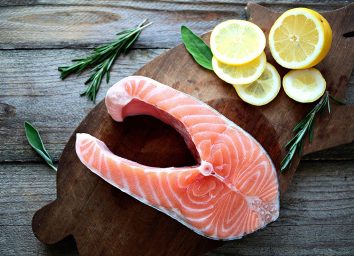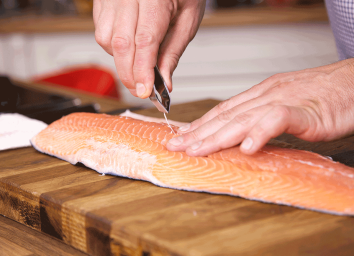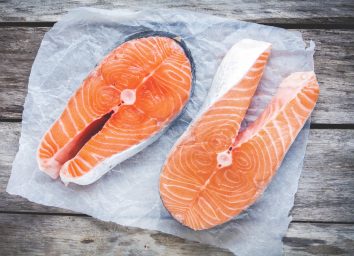The #1 Reason Why You Shouldn't Eat Salmon, According to Science

Salmon is one of the most popular types of seafood in the U.S., with the average American eating 2.55 pounds of the fish each year, according to the National Oceanic and Atmospheric Administration.
It's not hard to see why this fish is so popular, either—in addition to having a light flavor that complements countless vegetables, starches, sauces, and even wine pairings, wild-caught salmon is low in calories and packed with anti-inflammatory omega-3 fatty acids.
However, not every variety of this staple seafood is as healthy as you might think. In fact, there's one major reason why you shouldn't eat certain types of salmon: in doing so, you could be consuming a shocking amount of dangerous microplastics along the way.
While it was once believed that microplastics—tiny fragments of plastic measuring less than 5 mm in length, which are a major source of contamination in waterways—remained only in the gut of marine creatures, a 2017 study published in the journal Scientific Reports found that microplastics are easily discovered in the fleshy portions of fish frequently consumed by humans. According to a 2019 study published in Environmental Science & Technology (as first reported by Mother Jones), fish are now the third most common source of microplastic consumption for Americans.
Multiple studies have demonstrated the microplastic contamination of salmon in particular; a 2019 study published in Environmental Pollution discovered microplastics in juvenile Chinook salmon off Vancouver Island in British Columbia, while salmon, sardine, and kilka fishmeal from Iran was discovered to contain between 4,000 and 6,000 microplastics per killigram.
So, what's the harm in getting a side of plastic along with your salmon? A 2020 article published in the Journal of Hazardous Materials determined that "the abundance of microplastics could transfer hazardous pollutants to seafood (e.g., fishes and prawns) leading to cancer risk in human beings." Additionally, a review of research published in the International Journal of Environmental Research and Public Health found that microplastics can affect the nervous system, kidneys, respiratory system, skin, and may even cross the placental barrier.
Some sources of fish may be safer than others when it comes to microplastic contamination, however. In a 2020 study led by the Norwegian Research Center (NORCE)'s Tracking of Plastic emissions (TrackPlast) project, among a group of 20 farmed salmon and 20 wild-caught salmon, nearly half of the farmed salmon showed signs of microplastics in their tissue, while the same was true of just "a small number" of the wild-caught fish.
Knowing the feed source of the fish you're eating may also help keep you safer; a 2021 study published in Aquaculture found that, among 26 samples of fishmeal, the vast majority contained microplastics, but zero plastic was found in Antarctic-derived krill meal, a dietary staple in many farmed salmon.
So, the next time you're thinking about picking up a salmon filet at your local supermarket or plan to eat salmon at your favorite restaurant, don't be afraid to do your due diligence first—it might just protect your health in the long run. And to ensure you're benefitting from your seafood order, check out these Surprising Side Effects of Eating Fish, According to Science.
For more healthy eating news, make sure to sign up for our newsletter!








